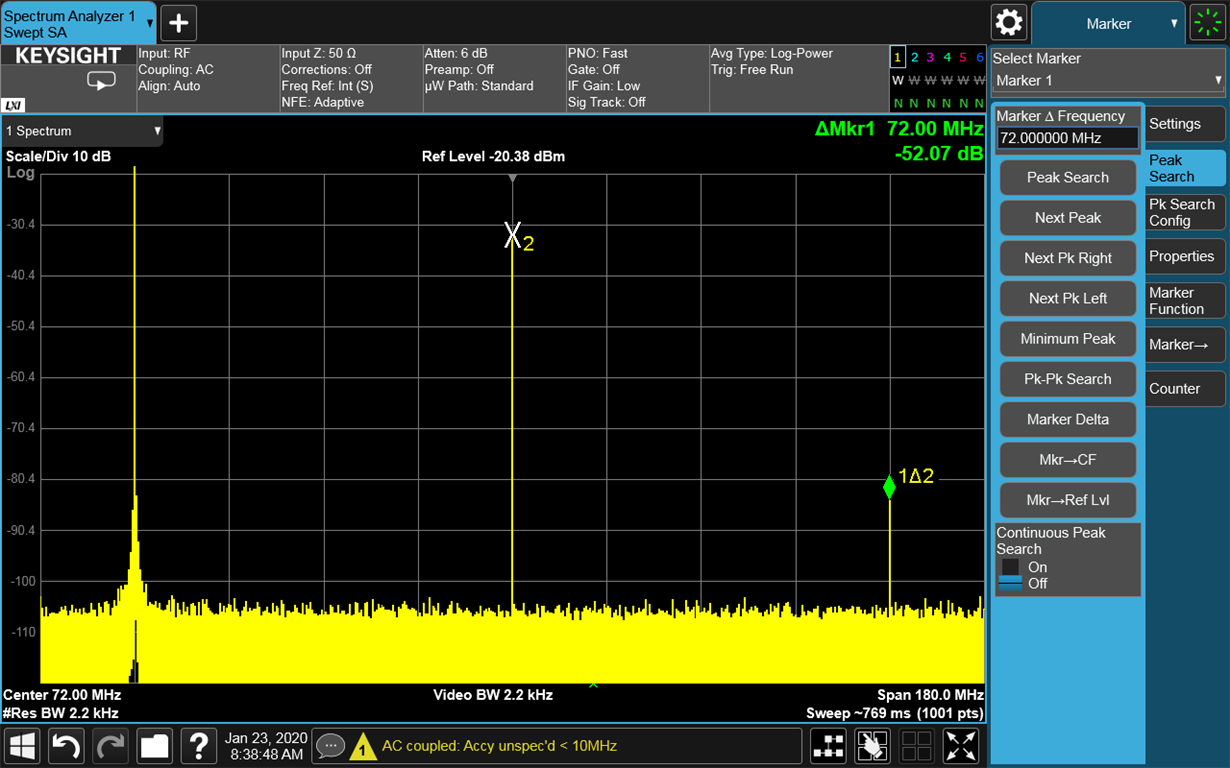Other Parts Discussed in Thread: DAC5675, CDCM7005, , DAC3174
Hello,
We use DAC5675 on a custom designed card. But we have a problem with our card. I want to explain the problem.
We drive the DAC5675a with a frequency of 360mhz from CDCM7005. And we think we provide the setup / hold values of the digital interface. To test the dac, we create a single tone and look at the dac's output. We see spur at the outputs of the dac according to the frequency of the single tone what we create at the output of the dac. As an example: When 240mhz single tone signal is created to output, we dont see spur. But when we output a single tone signal of 241mhz we see spurs.
We are a little inexperienced with data converters. I am open to all help on what spurs may be caused by.
Thanks in advance.
Canberk



